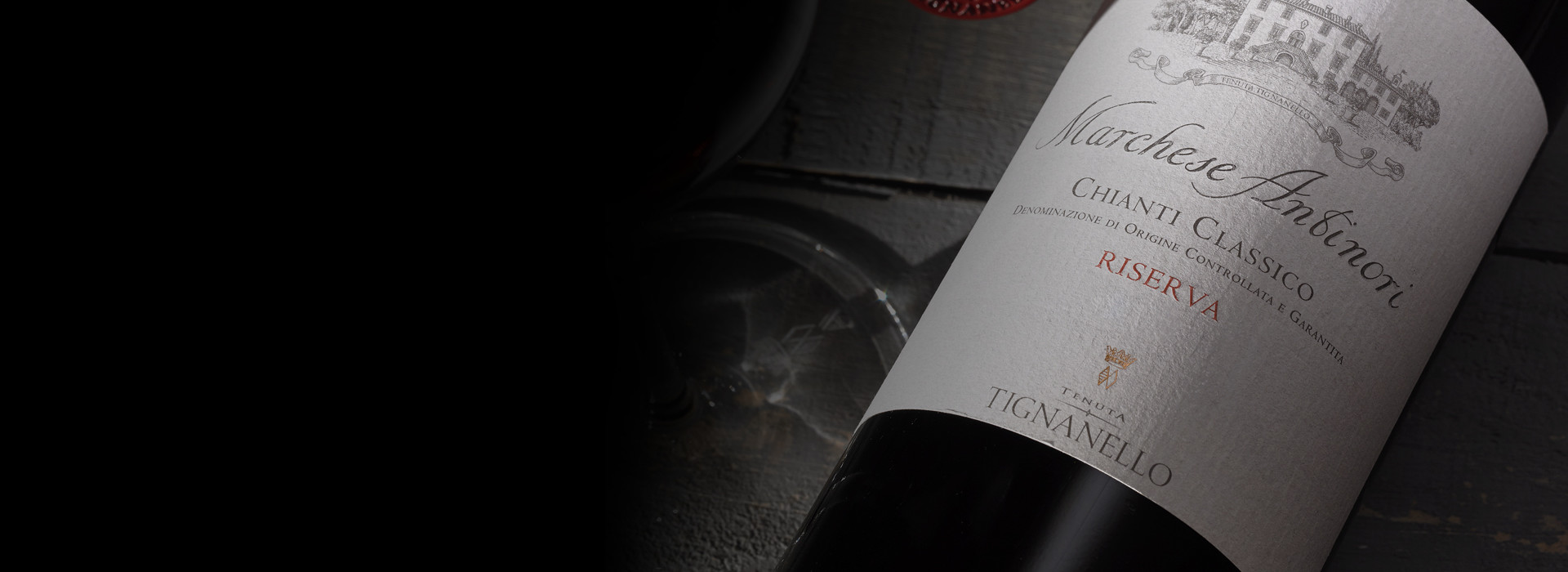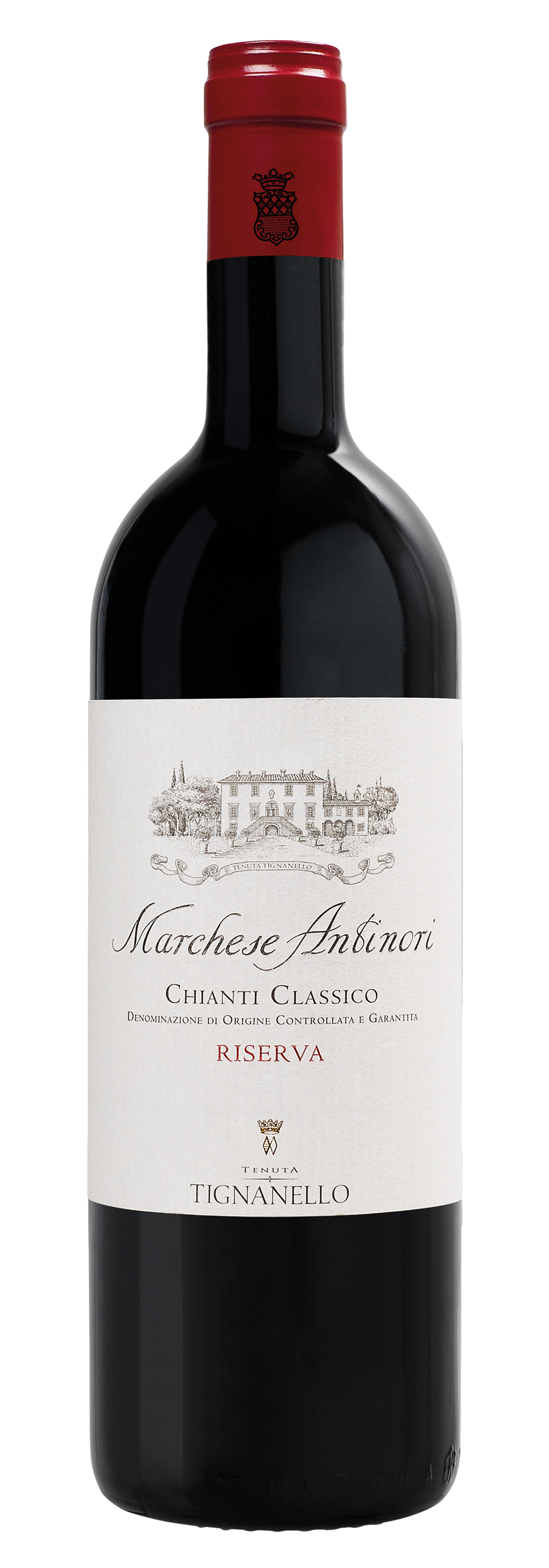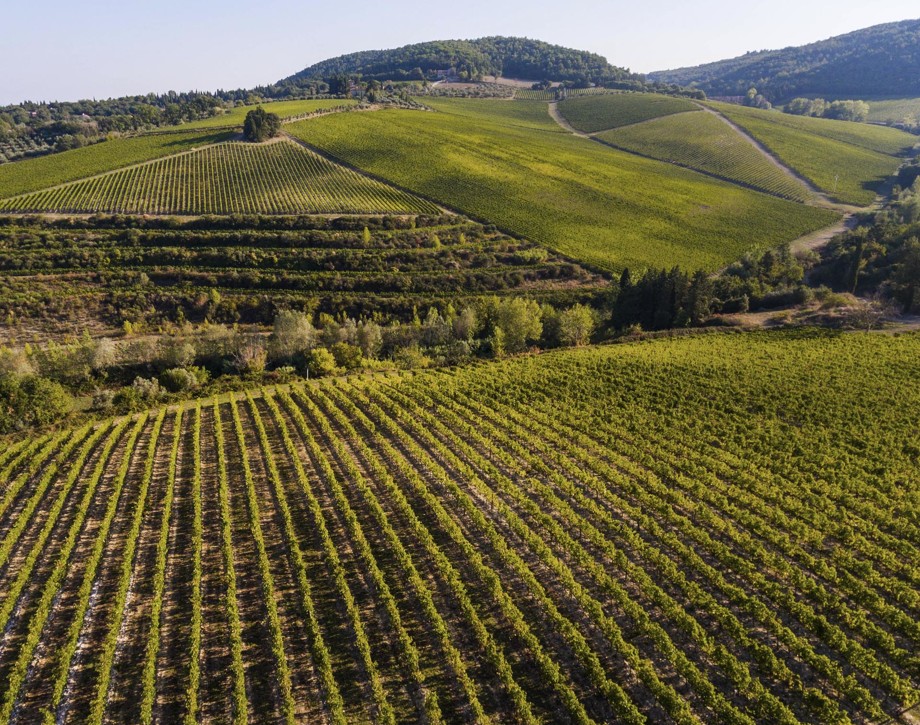Marchese Antinori

Climate
Late 2009 and the winter of 2010 were characterized by low temperatures and frequent rains in Chianti Classico; snow fell at the year’s end and continued to fall at intervals until mid-March. These climatic conditions favored the repose of the vines but, along with the usual early spring rains, led to a delayed bud break. April, May, and June were quite rainy and temperatures were below seasonal norms, provoking a delay in development in all grape varieties. Summer began with high temperatures in early July; this, together with dry weather, contributed to an excellent growth of the bunches and a recovery of ripening time. In late July and the first half of August temperatures were rather low and this, along with three rainstorms, once against slowed down ripening and growth. This climate in the growing season imposed a careful selection of the grapes on the vine to control production and assure a healthy crop. Picking begin towards the end of September, a month which alternated warm, sunny, and breezy days with occasional rain, fortunately followed by strong north winds which dried the grapes and vineyards; positive daily temperature swings assisted in achieving full ripeness and allowed picking to begin late in the month. Sangiovese was harvested into the first week of October, while the Cabernet Sauvignon picking started at the end of September and lasted until October 10. The health of the harvested grapes, their fine color and fragrance, and their pronounced varietal character indicated from the very beginning a potentially high level for the vintage. Total annual rainfall: 53.5 inches ( 134 centimeters) Average daily temperatures April 1 – October: 65° Fahrenheit (18.4 centigrade) Rainfall April 1-October 31: 26. 4 inches (66 centimeters)
Vinification
The climate of the growing season forced a careful selection of the grapes both during picking and in the cellars as well. The crop was delicately destemmed and the berries rigorously chosen to preserve the typical varietal character of both the Sangiovese and the Cabernet. The must was fermented with gentle techniques to insure an extraction which was intense, but capable of safeguarding elegance and suppleness as well. The musts themselves were rich in color and endowed with an important structure. Fermentation lasted a week, and the wine then remained on its skins for an additional 9-10 days. After being run off its skins, the wine went immediately into oak barrels, principally French, where it went through a spontaneous malolactic fermentation by the end of the year. The various lots of wine, once racked, were then aged for a year in French and Hungarian oak barrels. The lots were regularly tasted and analyzed during aging to maximize the final quality level, blended, and the wine aged for an additional year in bottle.
Historical Data
The Tignanello estate is located in the heart of the Chianti Classico production zone, nestled between the valleys of the Greve and Pesa rivers, and extends over close to 800 total acres (319 hectares), some 130 of which (415 hectares) are planted to vines. The vineyards consist principally of the native Sangiovese grape along with such non-traditional varieties as Cabernet Sauvignon and Cabernet Franc. The Marchese Antinori is an historic wine of the Antinori cellars which, since 2011, is produced from the grapes of the Tignanello estate. It is a wine which presents itself as the full expression of the quality and elegance of the Sangiovese of this part of Tuscany.
Tasting Notes
A brilliant ruby red with purple highlights, the wine shows aromas of violets and cherries along with marked and well amalgamated smoky notes of tobacco and sweet oak. On the palate the wine is ample, enveloping with an important vein of vibrant acidity typical of its territory and an important support on the flow. The tannins add length and persistence and a supple texture as well.

The Wine
This Antinori family’s historic label, since the 2011 vintage Marchese Antinori has been produced with grapes exclusively from the Tignanello vineyard. It’s made almost entirely with Sangiovese with a small percentage of other complementary varieties. A wine that fully expresses the quality and elegance of Sangiovese grapes grown in this area.

Climate
Late 2009 and the winter of 2010 were characterized by low temperatures and frequent rains in Chianti Classico; snow fell at the year’s end and continued to fall at intervals until mid-March. These climatic conditions favored the repose of the vines but, along with the usual early spring rains, led to a delayed bud break. April, May, and June were quite rainy and temperatures were below seasonal norms, provoking a delay in development in all grape varieties. Summer began with high temperatures in early July; this, together with dry weather, contributed to an excellent growth of the bunches and a recovery of ripening time. In late July and the first half of August temperatures were rather low and this, along with three rainstorms, once against slowed down ripening and growth. This climate in the growing season imposed a careful selection of the grapes on the vine to control production and assure a healthy crop. Picking begin towards the end of September, a month which alternated warm, sunny, and breezy days with occasional rain, fortunately followed by strong north winds which dried the grapes and vineyards; positive daily temperature swings assisted in achieving full ripeness and allowed picking to begin late in the month. Sangiovese was harvested into the first week of October, while the Cabernet Sauvignon picking started at the end of September and lasted until October 10. The health of the harvested grapes, their fine color and fragrance, and their pronounced varietal character indicated from the very beginning a potentially high level for the vintage. Total annual rainfall: 53.5 inches ( 134 centimeters) Average daily temperatures April 1 – October: 65° Fahrenheit (18.4 centigrade) Rainfall April 1-October 31: 26. 4 inches (66 centimeters)
Vinification
The climate of the growing season forced a careful selection of the grapes both during picking and in the cellars as well. The crop was delicately destemmed and the berries rigorously chosen to preserve the typical varietal character of both the Sangiovese and the Cabernet. The must was fermented with gentle techniques to insure an extraction which was intense, but capable of safeguarding elegance and suppleness as well. The musts themselves were rich in color and endowed with an important structure. Fermentation lasted a week, and the wine then remained on its skins for an additional 9-10 days. After being run off its skins, the wine went immediately into oak barrels, principally French, where it went through a spontaneous malolactic fermentation by the end of the year. The various lots of wine, once racked, were then aged for a year in French and Hungarian oak barrels. The lots were regularly tasted and analyzed during aging to maximize the final quality level, blended, and the wine aged for an additional year in bottle.
Historical Data
The Tignanello estate is located in the heart of the Chianti Classico production zone, nestled between the valleys of the Greve and Pesa rivers, and extends over close to 800 total acres (319 hectares), some 130 of which (415 hectares) are planted to vines. The vineyards consist principally of the native Sangiovese grape along with such non-traditional varieties as Cabernet Sauvignon and Cabernet Franc. The Marchese Antinori is an historic wine of the Antinori cellars which, since 2011, is produced from the grapes of the Tignanello estate. It is a wine which presents itself as the full expression of the quality and elegance of the Sangiovese of this part of Tuscany.
Tasting Notes
A brilliant ruby red with purple highlights, the wine shows aromas of violets and cherries along with marked and well amalgamated smoky notes of tobacco and sweet oak. On the palate the wine is ample, enveloping with an important vein of vibrant acidity typical of its territory and an important support on the flow. The tannins add length and persistence and a supple texture as well.

Tenuta Tignanello
The Tenuta Tignanello estate is in the heart of Chianti Classico, in the gently rolling hillsides between the Greve and Pesa river valleys. It extends over an area of 319 hectares (788 acres), of which about 165 (407 acres) are dedicated to vines. Two of the estate’s prized vineyards are on the same hillside, Tignanello and Solaia, on soils that originated from marine marlstone from the Pliocene period rich in limestone and schist.
Soil
Calcareous rocky soils with alberese (marl limestone) and marl.


















